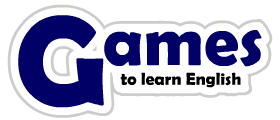Hangman
This is an article about the game hangman and how to play it in the classroom. It is specifically aimed at teachers of ESL students. If you are looking for a version of hangman that students can play individually, then click here. Alternatively, if you are looking for a version to play with an interactive whiteboard, then you can download one with this link.
How to play
To play hangman in the classroom, you first have to make some space on the board. Then think of a word or phrase that the students will be able to guess. An example would be the word "kangaroo" or the phrase "I think therefore I am". Then, at the bottom of the board, draw a dash "_" to represent each letter of the word/phrase. For "kangaroo" this would be "_ _ _ _ _ _ _ _". Then students put their hands up and call out letters of the alphabet. If the word/phrase contains that letter, then you write the letter above the dash. So if a student calls out "a", you fill in the letters to make "_ a _ _ a _ _ _". However, if the word/phrase doesn't contain the letter, then you draw part of the hangman.
The hangman is a series of straight lines and it is made by drawing them in order. Each part is one straight line, so for each incorrect letter, you draw one line on the board. The hangman is made of about 4/5 lines for the gallows, and then another line each for the limbs, head and torso of the man. The final part is the noose around the neck. This should be the last part and once you draw the noose, the game is lost and the students have failed.
The aim of the game is for the students to guess all the letters before you finish drawing the hangman. If they can do this, then they win the game. Otherwise, they lose and you have to reveal the missing letters. If the word or phrase is difficult, then you can modify the number of lines needed to draw the hangman. Once the game is complete, you can repeat for a different word/phrase.
A variation involves putting the students in teams and having each team take turns to guess the letters. If they guess correctly, then they keep guessing until they miss a letter. You can give points for each correct letter guessed and/or a number of points for completing the word/phrase. Another variation would be to fill in the vowels at the start to make it easier.
Realistically, the game has limited educational value beyond practice spelling words or refreshing student's familiarity with particular phrases. However, the game can be used as an engaging lead in to a topic. It can get students attention and start to get them thinking about certain things. Typically though, the main use for the game is as something to do at the end of class. In a situation where you have finished your lesson plan but there are still a few minutes left, then hangman is a simple way to keep students attention for the last few minutes. It is useful as it is simple to play and you can continue to repeat with new words until the bell rings.
The words or phrases that you should depend on your class and the level of your students. One good idea, is to use words that review vocabulary that you studied in previous lessons. Longer words/phrases are typically better than short ones as then have more letters and so students are more likely to guess correctly. Another strategy is to give clues to the students as to the type of word. For example, you could tell the students that it is a fruit, or a sport. Famous quotes or mottos are also good content to use, as are song lyrics or lines from a movie.
